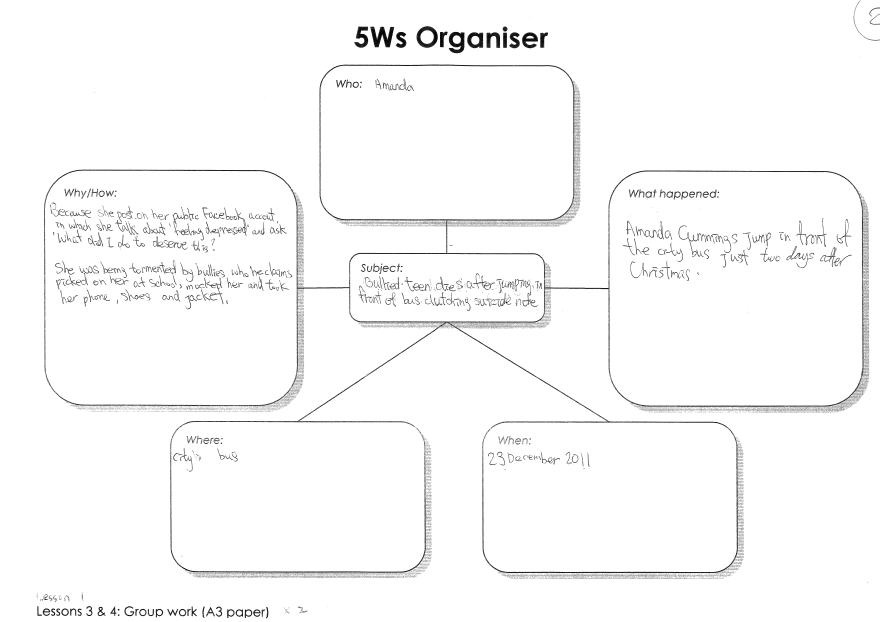The evaluation of this project is based on the data collected from the students’ feedback and reflections made in questionnaires, their performance in their work, the post tests on vocabulary skills, as well as the observations the teachers made during and after the project.
-
Confidence in using English news and feature articles as a source of information
In order to do well in both the NSS Social Issues elective modules and Liberal Studies, it is mandatory that students have to constantly update themselves on current issues through extensive reading of materials, such as newspapers in which news and feature articles are two of the most common text types. Being able to perceive themselves as capable of making sense of these texts contributes to students’ motivation in reading these texts more extensively and using them as a source for broadening their knowledge base. From the students’ feedback in the questionnaires, 95.3% of them expressed that they had a better understanding of the content in English newspapers and 90% of them believed that they knew how to look for the news or the kinds of information they needed from an English newspaper after the project.


-
Application of knowledge in text type features and organisation of English news and feature articles
A good understanding of text features and organisation of English news and feature articles enables students to identify the main ideas and topics in these texts more effectively and efficiently. During the lessons, it was observed that the majority of the students were able to locate key information from the articles with the help of the text features, such as the lead, headings and text boxes. This observation is supported by the students’ feedback given in the questionnaires. 84% of them expressed that they could find the key information in an article more quickly with the knowledge of its text features than before. 80% and 89.5% students agreed that they learned how information is organised in hard news and feature articles respectively after the project.
-
Strategies and skills for reading more challenging texts
One of the challenges students may have when reading newspaper and magazine articles is the number of unfamiliar words in them. Because of this, students may easily be discouraged or distracted in their reading process. However, it was observed that the students were satisfied with their performances in achieving the reading and speaking tasks based on the authentic hard news and feature articles used in the project. 86% of the students agreed that they were more capable of using the text features to make predictions about the articles – a strategy which enables students to make connections, ask questions and verify hypotheses so as to gain a deeper understanding of the issues being discussed. 91.6% of the students agreed that they learnt how to guess the meaning of unfamiliar words using contextual and linguistic clues and 89.5% of them felt more confident in reading because of this. Among the most useful things students believed they learnt in the first part of the project, “guessing the meaning of difficult vocabulary using contextual cues” and “looking for main ideas/key information in an article effectively” were the top two items on the lists.

-
Application of critical thinking skills
The ability to discern views, values and writing intentions stated or implied in different written texts is another area that students need to develop in preparation for their learning of the Social Issues elective module and Liberal Studies. In the lesson on the feature article about cyber-bullying, not only were most groups able to identify the writer’s intention and the target audience of the text, but they were also able to make use of this information to make judgment on the credibility of the information conveyed in the text. Also, in the questionnaire about the lessons on the feature articles, nearly 90% of them agreed that they had learnt to read a text critically by asking questions about the target audience, purposes and reliability of the information in a text.

-
Use of graphic organisers
There are many benefits for students to use graphic organisers. Not only can graphic organisers encourage students to formulate and reorganise the ideas from the text in a new framework, but they also lessen the anguage demand on the students in demonstrating their comprehension of the texts. This is especially helpful to students who are not too strong in expressing themselves in English. With a lower language barrier for these students, they can focus more on demonstrating their understanding about the topic of the text and focus less on feeling self-conscious about the accuracy of their answers. Hence, gradually, the students’ motivation in reading and their sense of achievement will be enhanced. The popularity of the graphic organiser used in the project is reflected in the students’ reflections made. Many students expressed that the 5W&H Graphic Organiser, which helped them to identify and arrange key information from the articles, was one of the most useful things they learnt in the project.
 |

|
-
Mastery of language for expressing feelings towards the topic or event in an article
Describing one’s emotional responses towards a topic or event in an article is common in conversations. One of the project’s objectives was to introduce some more sophisticated adjectives, such as “concerned” and “sadden” for the students to make such responses. While 75% of the students agreed that they had learnt how to express their feelings about a news story in the project, it was observed that very few of these adjectives were applied in the students’ spoken and written responses. It was suspected that students were not yet comfortable with taking risk in their word choices and preferred to rely on the adjectives that they were more familiar with, such as “worried”, “sad” and “angry”. In order for the students to retain the new vocabulary acquired, they should be encouraged to apply these words in as many contexts as they could.
| 
